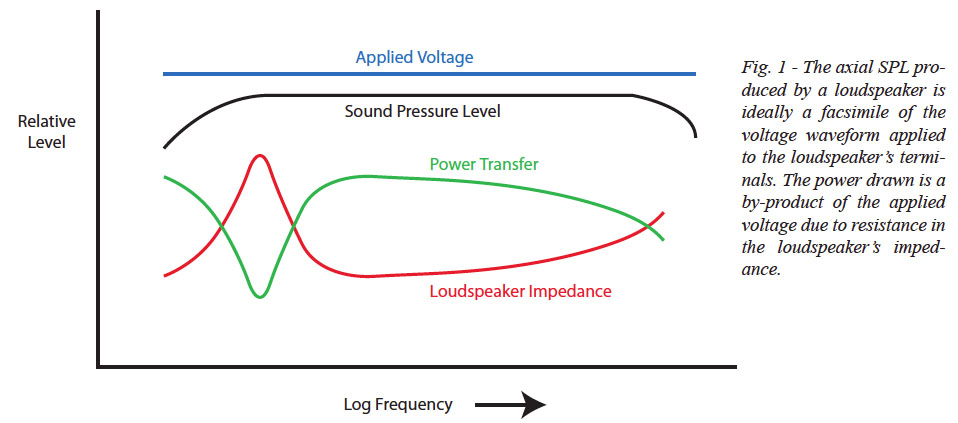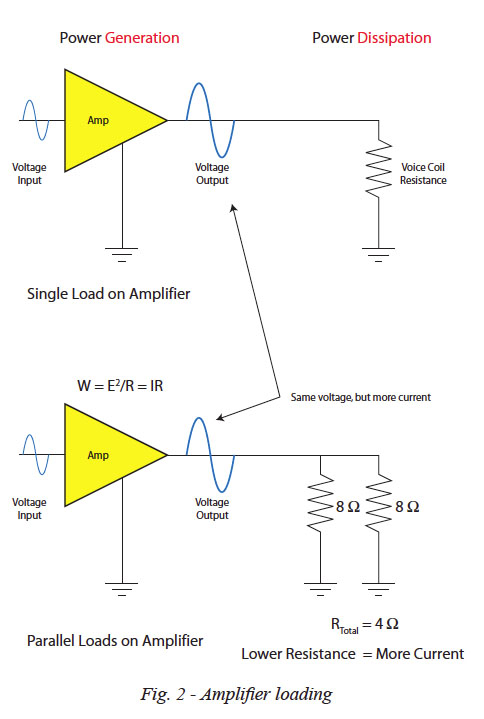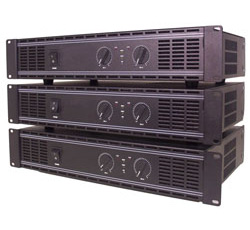It is generally accepted that a large loudspeaker power rating is a sign of quality and something to be desired. It may be the performance metric that has the greatest influence on the consumer’s buying decision.
A closer look reveals that it is far less significant than other metrics regarding the performance of the loudspeaker.
The Basics
The power rating of an amplifier describes its ability to do work on a load – like moving a loudspeaker. Generally, the bigger the better if you want a lot of sound.
The power drawn by the transducer varies with frequency, and while the SPL is often referenced to the input power, it more closely resembles the voltage waveform applied to the loudspeaker. This can be seen by plotting the on-axis SPL against both (Figure 1, below).
It is desirable for the loudspeaker to have a flat voltage response, so that equal drive voltage per frequency produces a flat magnitude response on-axis. So it is actually the drive voltage that is of interest, not the power.
The voltage waveform for music or speech is complex and has broad spectral content. The heating value, or equivalent DC value is the RMS (Root Mean Square) voltage. The apparent power drawn by the load is found by multiplying the RMS voltage by the RMS current. The average power is found by multiplying the apparent power by the power factor (often erroneously called “RMS power” on specification sheets).

Modern amplifiers act as constant voltage sources to the loudspeaker. This means that the output voltage of the amplifier should be essentially independent of the load placed on it by the loudspeaker.
If you drive an amplifier with a signal and measure its output voltage with no load connected to the output terminals, and then connect a loudspeaker to the terminals, there is no significant change in the reading on the voltmeter. The difference between the no-load and loaded condition is that with the load present current will flow from the amplifier terminals through the loudspeaker. With current flowing the amplifier has a tougher job maintaining its output voltage.

Lower load impedances (more loudspeakers in parallel) draw more current from the amplifier, increasing the total power transfer from source to load (Figure 2). This is why the total output power of the amplifier generally increases when you hook-up more loudspeakers – the voltage stays the same but more current flows due to the lower impedance. Note that the output power of the amplifier increases, but the power is distributed among the connected loudspeakers.
So if you have one loudspeaker connected and then parallel another one with it, the total power output of the amplifier increases but the power per loudspeaker does not. In fact, it probably drops a little. It is best to keep amplifier loads above 4 ohms to minimize cable effects and avoid excess current demands on the amplifier.
All of this is to point out that it is still the applied voltage that determines the resultant SPL. It is often counterproductive to connect more loudspeakers in parallel to get more “power” out of the amplifier, because this eventually makes the applied voltage sag and results in a loss of SPL.
While power ratings are convenient, it still comes down to voltage across a load, not power. Yet it is traditional in the audio industry to reference the output of a loudspeaker to the applied power rather than the applied voltage.





















